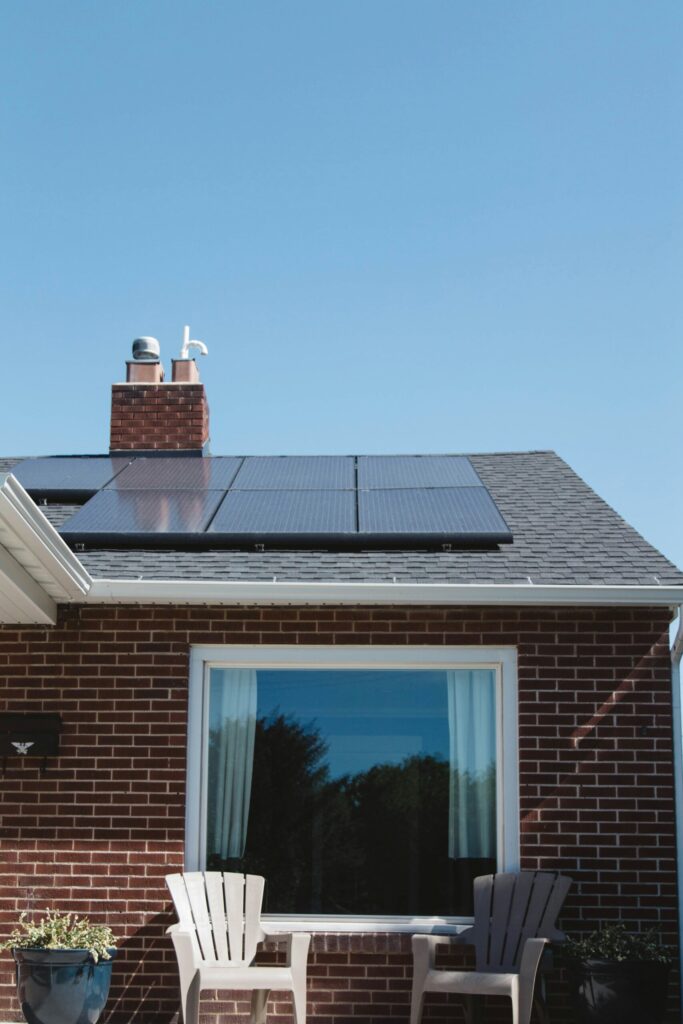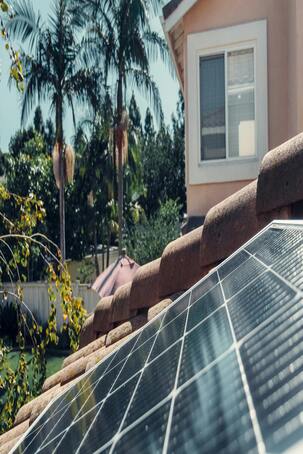Energy efficiency isn’t just about reducing your bills; it’s about creating a sustainable, comfortable space that aligns with modern living standards. Whether you’re a homeowner in the bustling streets of Maryland or savoring the charm of DC’s neighborhoods, building or retrofitting an energy-efficient home can bring significant long-term rewards. Here’s a step-by-step guide on how to create an energy-efficient sanctuary while adding value to your property.

Why Build or Retrofit for Energy Efficiency?
Investing in an energy-efficient home benefits you in multiple ways:
- Lower Utility Bills: A carefully designed energy-efficient home can significantly cut your heating, cooling, and electricity costs.
- Environmental Impact: Reduce your carbon footprint and help preserve natural resources for future generations.
- Healthy Living: Improved insulation and ventilation lead to better indoor air quality.
- Higher Resale Value: Homes with energy-efficient features are highly sought after by today’s environmentally conscious buyers.
Key Design Tips for an Energy-Efficient Home
1. Maximize Natural Light
Natural lighting is one of the simplest ways to improve energy efficiency in your home. Place windows strategically to reduce reliance on artificial lighting while enhancing your home’s overall comfort.
- Install Larger Windows facing south to capture maximum sunlight in colder climates like Maryland.
- Use energy-efficient window glazing or double-paned windows to reduce heat loss in winter and block heat in summer.
- Add skylights to bring natural light into darker areas of the home without increasing energy consumption.
2. Upgrade Insulation
Your insulation acts as a barrier to heat transfer, keeping your home cooler in summer and warmer in winter. Proper insulation minimizes the strain on heating and cooling systems.
- Insulate areas prone to air leakage, such as attics, walls, and crawl spaces.
- Opt for advanced materials like spray foam or cellulose insulation for better thermal resistance.
- Seal cracks and gaps around windows, doors, and vents to prevent air leakage.
3. Invest in Energy-Efficient Appliances
Today, energy-efficient appliances are designed to deliver top-tier performance while using minimal electricity and water.
- Look for ENERGY STAR-rated appliances that meet federal energy efficiency standards.
- Optimize the use of appliances like dishwashers and washing machines with eco-friendly modes.
- Install a programmable or smart thermostat to control your home’s temperature without unnecessary energy waste.
4. Focus on Heating, Ventilation, and Air Conditioning (HVAC) Systems
An efficient HVAC system plays a crucial role in maintaining a comfortable temperature while minimizing energy use.
- Upgrade old HVAC units with energy-efficient systems tailored for Maryland or DC climates.
- Regularly service your system to improve efficiency and prevent costly repairs.
- Add a heat recovery ventilator (HRV) to improve air circulation without sacrificing energy efficiency.
5. Opt for Renewable Energy Sources
Reduce your dependency on conventional energy sources by incorporating renewable energy technologies.
- Solar Panels: An increasingly common choice for Maryland and DC homeowners due to local incentives and tax credits.
- Geothermal Systems: Harness the earth’s thermal energy to provide heating, cooling, and hot water more efficiently.
- Wind Turbines (if space permits): Consider implementing small-scale residential wind turbines.
6. Adopt Water-Saving Strategies
Energy and water efficiency go hand-in-hand. Incorporating water-efficient systems can save gallons of water and dollars.
- Install low-flow faucets, showerheads, and dual-flush toilets to conserve water indoors.
- Use rainwater harvesting systems to water your garden or flush toilets.
- Switch to energy-efficient water heaters, such as tankless or solar water heating systems.
Strategies for Retrofitting Existing Homes
If you’re a homeowner looking to update your current property, many energy-efficient upgrades allow you to enjoy the benefits without tearing your home apart.
- Replace Windows with energy-efficient models that block drafts while letting in ample sunlight.
- Weatherproof Doors and Windows by adding weatherstripping or caulking.
- Install Smart Technology like energy-monitoring systems or smart lighting to improve energy usage visibility and control.
- Switch to LED Lighting throughout your home, which lasts longer and uses less electricity than traditional bulbs.

Building Energy-Efficient Homes in Maryland and DC
Both Maryland and DC are excellent markets for energy-efficient homes due to their residents’ eco-conscious lifestyles and government incentives.
- Maryland offers various tax credits and rebates for utilizing renewable energy resources or making energy-efficient home improvements.
- DC leads with its Green Building Program and financial incentives encouraging homeowners and developers to prioritize energy-efficient construction.
Before embarking on your energy-efficient upgrades or construction, check with local authorities or real estate professionals for the latest in incentives or compliance requirements. These resources could help you save significantly on your project costs.
Make Energy-Efficiency a Reality
Building or retrofitting an energy-efficient home is an investment that pays off in comfort, savings, and peace of mind. Whether you’re preparing for harsh Maryland winters or enjoying a breezy DC spring, your energy-efficient choices make a significant difference.
Looking for personalized advice to bring your ideal energy-efficient home to life? Contact our expert team at Winthorpe design and build, and we’ll guide you through the process from start to finish. Build wisely, live sustainably, and love the space you call home.





